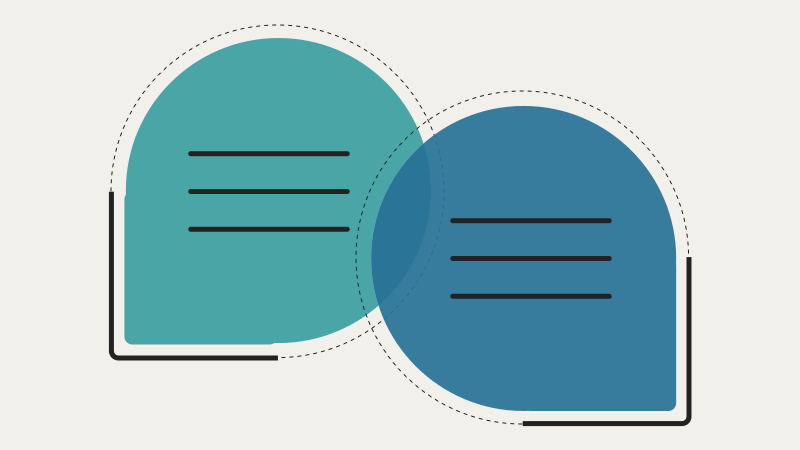
Creating a well-designed website is crucial for nonprofits. It’s not just about looking good—your website is often the first point of contact between your organization and potential supporters, donors, or volunteers. It needs to convey your mission clearly and be easy to navigate. To help you get there, we’ve compiled a list of resource books every nonprofit professional should have in their library. These books are packed with practical advice, easy-to-understand concepts, and actionable tips to help you build a website that truly represents your organization.

Get in touch to talk to us about your project or ideas.
Let’s ChatAs a nonprofit professional, you wear many hats, and creating or managing a website might be just one of your responsibilities. However, having a well-designed website is crucial for your organization’s success. These books provide the knowledge and tools you’ll need to create a website that not only looks good but helps you reach your goals.
- “Don’t Make Me Think” by Steve Krug
This book is a classic in web design and usability. Steve Krug simplifies complex concepts. He makes it easy to understand how people use websites. The main takeaway? Your website should be so straightforward that visitors don’t have to think twice about how to navigate it. This is especially important for nonprofits, where clear communication of your mission is key.
What You’ll Learn:
- How to create a user-friendly website.
- The importance of simplicity and clarity in design.
- Practical tips for improving your website’s usability.
2. “The Non-Designer’s Design Book” by Robin Williams
If you’re not a designer by trade, this book is your new best friend. Robin Williams breaks down design principles into simple, easy-to-follow steps. You don’t need to be a professional designer to create a visually appealing website. This book will give you the confidence to make design decisions that enhance your nonprofit’s online presence.
What You’ll Learn:
- Basic design principles like contrast, repetition, alignment, and proximity.
- How to apply these principles to create a balanced and effective website.
- Tips on choosing fonts and colors that match your brand.
3. “Designing for the Digital Age” by Kim Goodwin
This book goes beyond the basics and dives into the process of designing user-friendly digital experiences. Kim Goodwin’s approach is thorough and practical, making it a valuable resource for anyone involved in web design. Whether you’re a beginner or an experienced professional, there is something for everyone in this book.
What You’ll Learn:
- How to create user personas to better understand your audience.
- The importance of user-centered design.
- Step-by-step guides on the design process, from research to final product.
4. “A Project Guide to UX Design” by Russ Unger and Carolyn Chandler
User Experience (UX) is all about how people feel when they interact with your website. This book is a comprehensive guide to UX design, making it perfect for nonprofits that want to create a website that is both functional and enjoyable to use.
What You’ll Learn:
- The basics of UX design.
- How to create a website that meets the needs of your users.
- Practical advice on managing a UX design project.
5. “HTML and CSS: Design and Build Websites” by Jon Duckett
Understanding the basics of HTML and CSS can give you more control over your website’s design. Jon Duckett’s book is written in a way that even beginners can understand. It offers helpful visuals and clear explanations, making it a great resource for those who want to dive deeper into web design.
What You’ll Learn:
- The basics of HTML and CSS.
- How to create and style web pages.
- Tips for building a responsive website that looks good on all devices.
6. “Mobile First” by Luke Wroblewski
With more people accessing websites from their phones, having a mobile-friendly website is crucial. Luke Wroblewski’s book focuses on designing for mobile devices first, ensuring your website looks great and functions well on smaller screens.
What You’ll Learn:
- The importance of mobile-friendly design.
- Techniques for creating a responsive website.
- How to prioritize content for smaller screens.
7. “Content Strategy for the Web” by Kristina Halvorson and Melissa Rach
Your website’s design is important, but so is the content. This book focuses on developing a content strategy that supports your nonprofit’s goals. Kristina Halvorson and Melissa Rach offer practical advice on planning, creating, and managing content that resonates with your audience.
What You’ll Learn:
- How to develop a content strategy for your website.
- Tips for creating content that aligns with your nonprofit’s mission.
- Strategies for managing and maintaining website content.
8. “Seductive Interaction Design” by Stephen Anderson
Stephen Anderson’s book will guide you in making your website engaging and enjoyable for users. He explores the psychology behind what makes websites appealing. He offers sensible advice on creating interactions that keep people coming back.
What You’ll Learn:
- The psychology of user engagement.
- Techniques for creating compelling interactions.
- How to design a website that encourages users to take action.
9. “Web Analytics 2.0” by Avinash Kaushik
Understanding how people use your website is key to improving it. Avinash Kaushik’s book on web analytics provides a deep dive into measuring and analyzing website data. It’s essential for any nonprofit professional who wants to make data-driven decisions.
What You’ll Learn:
- How to set up and use web analytics tools.
- Tips for measuring website performance.
- Strategies for using data to improve your website’s design and content.
Final Word
The suggested books can be a valuable resource for nonprofit professionals and a welcomed addition to your library. They offer practical advice, clear explanations, and insights that can help you create a well-designed, user-friendly website. Whether starting from scratch or looking to improve an existing site, these books will give you the tools you need to succeed.
- Building A Website? Weighing the Pros and Cons of Page Builders
- Build Your Nonprofit’s Dream Website